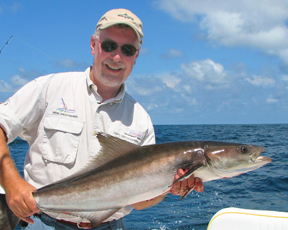
By Capt. Cefus McRae,
Nuts & Bolts of Fishing Series
The six-inch purple worm is probably responsible for more fish caught on an artificial lure than any other ever invented. Although I’ve never actually seen a purple-colored real worm wreaking havoc on a bass bed, or seen purple-colored worms swimming across a weed bed, the fish must inherently know they are something worth eating. For the past several decades, the purple worm has reigned supreme as a go-to bait for a lot of anglers, and it remains a tried and true favorite today.
Anglers have come up with variations on the way to rig and fish plastic worms. Manufacturers offer them in myriad colors, add scents and rattles and make them in a variety of sizes. For the most part, they’re still plastic worms, and they still catch lots of fish.
I’m not sure, but I’d bet old fish don’t tell young fish they should eat purple worms. Once a fingerlings leave the bed, they’re pretty much on their own. It’s an eat-or-be-eaten world under the surface. Little bass have to eat big meals in order to become big bass. Apparently purple worms have become a staple part of their menu.
But what about all the other colors? June Bug, Watermelon, Bubble Gum, Moccasin, Pumpkin Seed, and there are literally hundreds of others. Yep, they catch fish too. Some days the hot color might be Silver Shad, and other days it will be Chartreuse Fleck.
I usually keep three colors of plastic worms in my tackle box; June Bug, Pumpkin Seed…and Purple. Instead of a vast array of colors, I choose to keep an assortment of sizes; 4-inch, 6-inch and 9-inch. Why? Because those are the colors and sizes that work for me. I can create just about any style of rig or presentation from those sizes and colors, from Texas to Carolina, wacky to drop shot and more.
You can fish brush piles, weed beds, docks, stump fields and lots of other places that a crankbait would get hung up. You can fish shallow or deep, or even skip it across lily pads, and plastic worms won’t bust the bank, compared to some of the 20 dollar or more lures that are out there.
And I’ve experienced a good deal of success in the salt with worms as well. In fact, I’d submit a plastic worm has a lot more in common with what saltwater fish eat than most freshwater fish. Needlefish, lizardfish, glass minnows, eels and other salty delectables, have shapes closer to a 6-inch worm than does a crayfish or frog. I’ve caught cobia, mackerel, barracuda and dolphin with Texas and Carolina-rigged plastic worms.
There are plenty of lure choices on the shelves today. All colors, shapes and sizes, and they will all catch fish at some point in time. When you’ve exhausted all the other options in your tackle box, dig deep and rig up an old friend…a purple worm. It’s highly possible you’ll develop a renewed admiration for how well old stuff catches new fish.
Tight Lines and Calm Seas.
